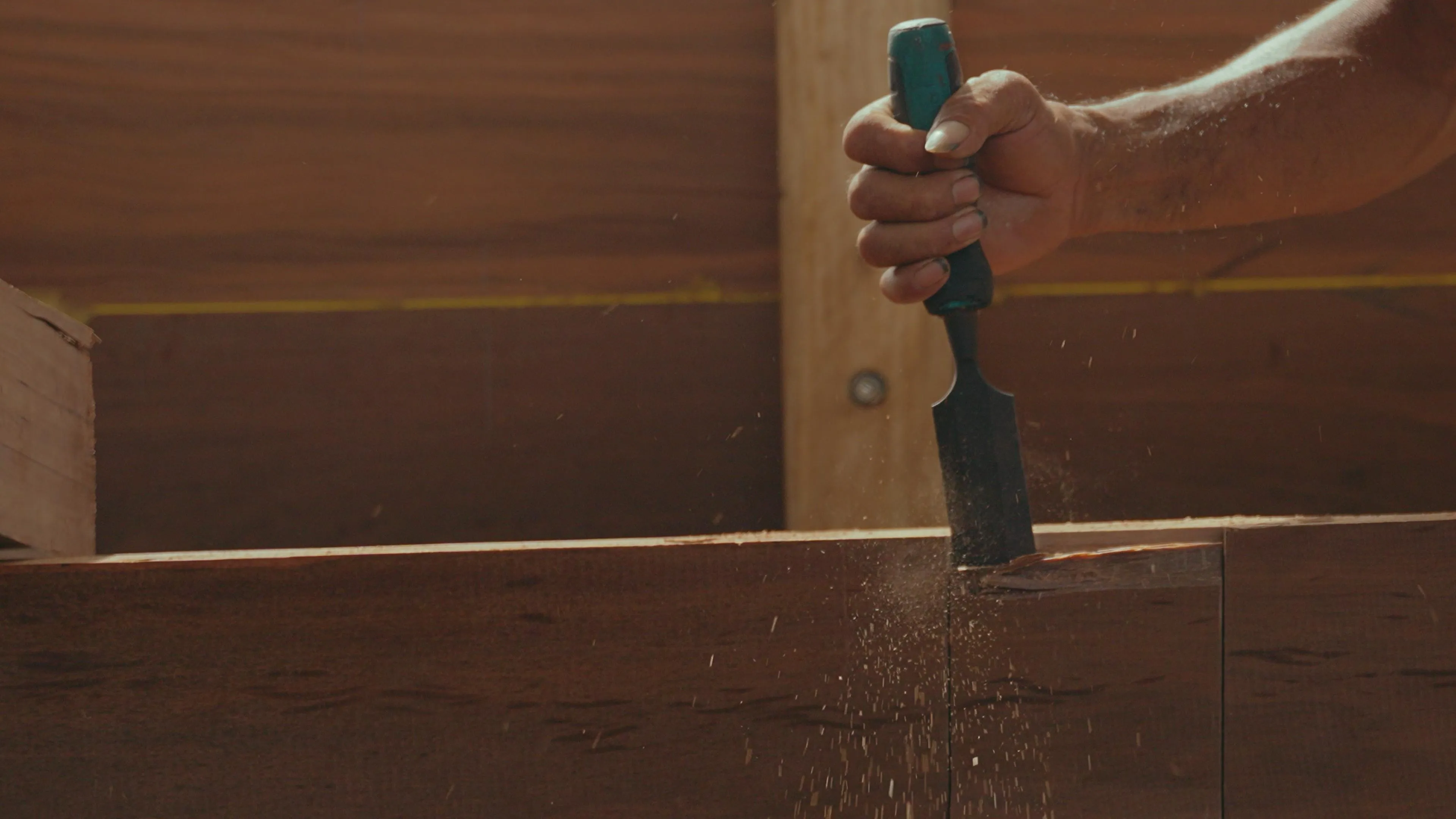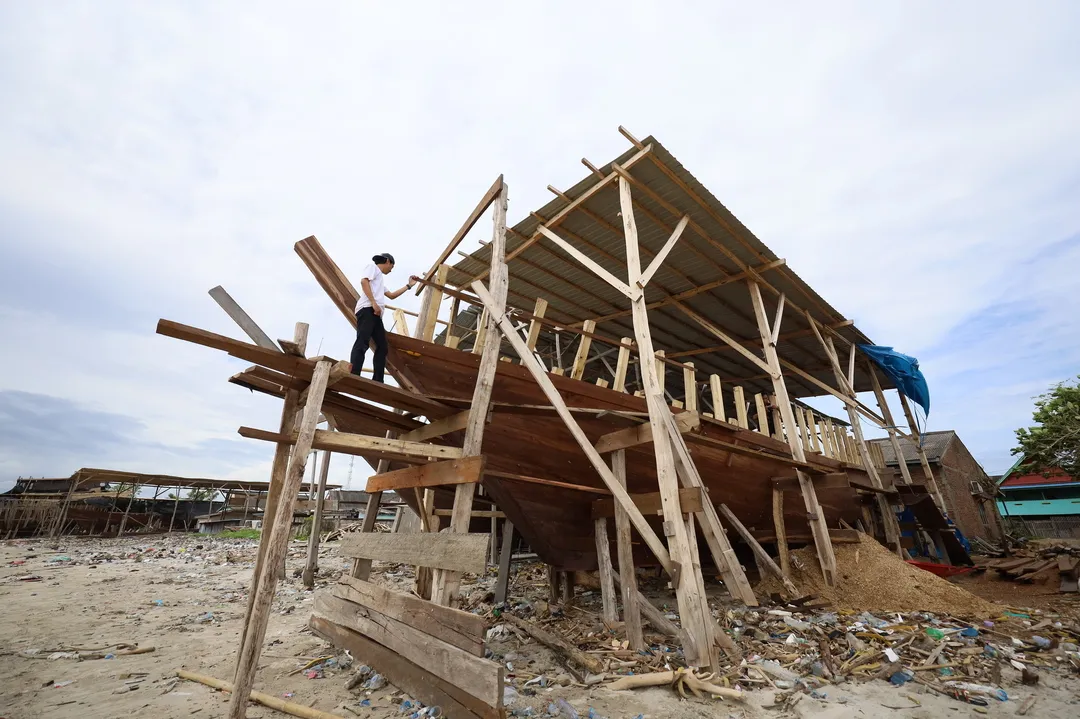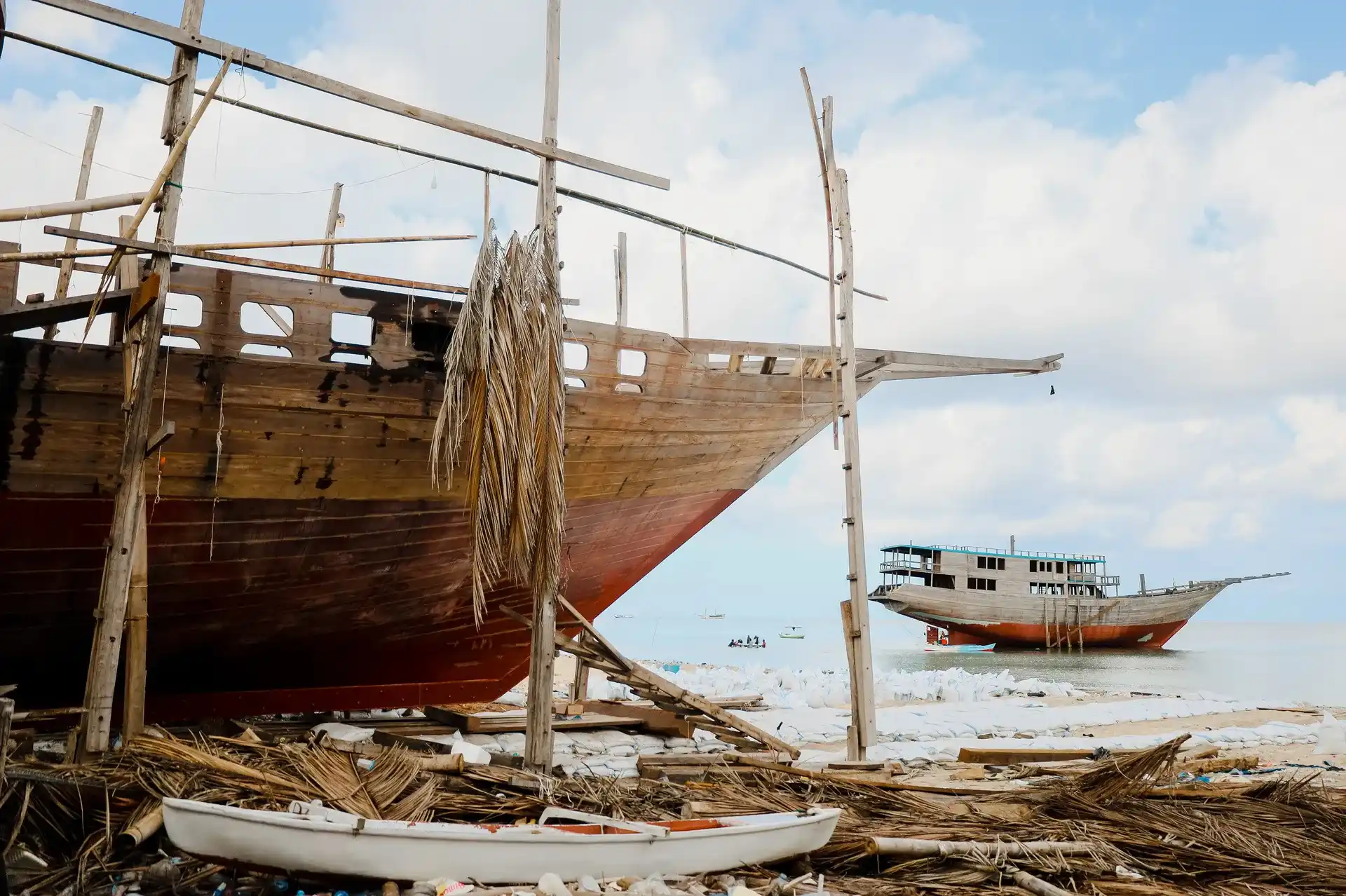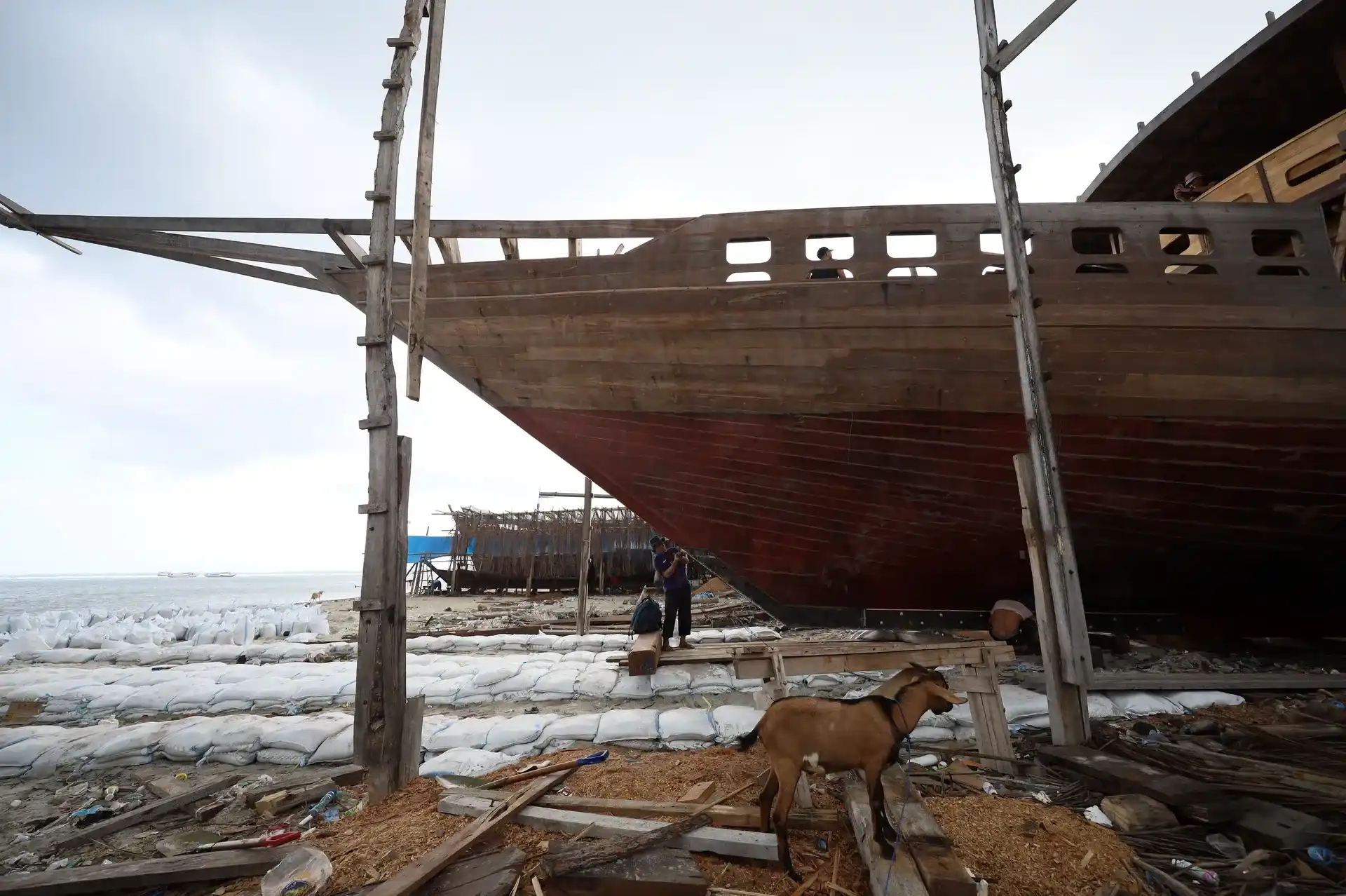How Much to Build a Phinisi Sailboat in Indonesia? Full Cost Breakdown
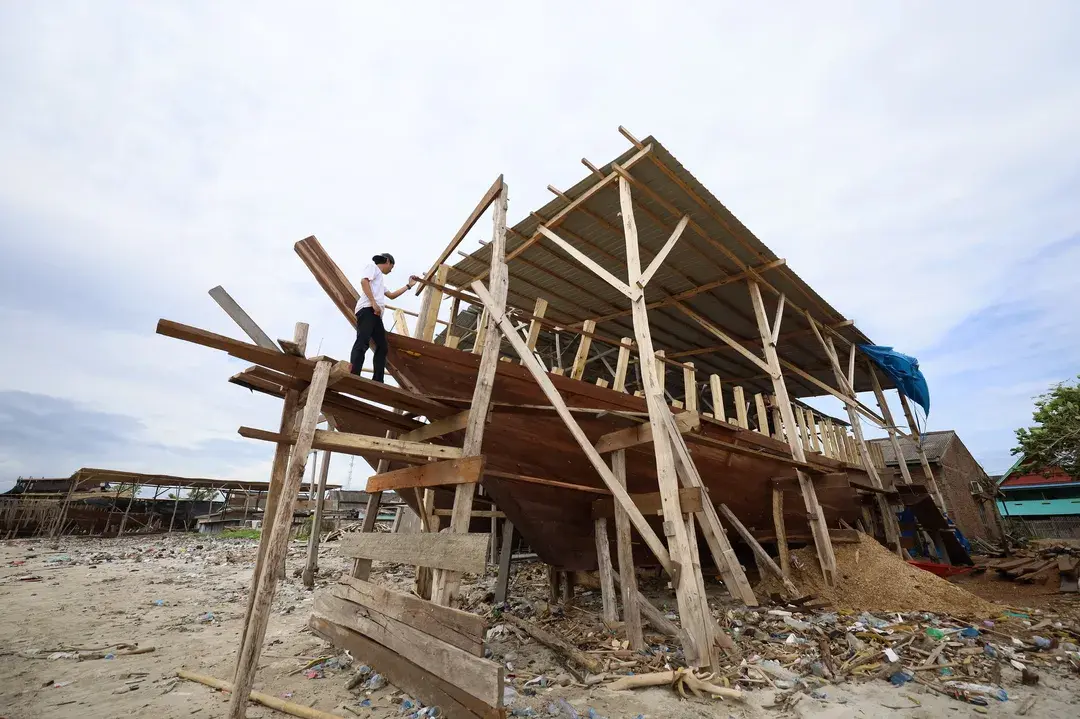
How much to build a Phinisi sailboat depends on more than just materials and labor—it’s deeply tied to cultural rituals, artisanal skill, and the soul of Indonesia’s maritime legacy.
Each vessel is handcrafted using sacred traditions, rare hardwoods, and intuitive design passed down through generations. The costs vary widely depending on size, function, and level of customization.
Let’s explore what truly shapes the price of this iconic sea craft.
Read Also: Phinisi Boat Building Tradition and Market: Craft, Culture, and Commerce
Key Cost Factors in Phinisi Construction
The cost to build a Phinisi sailboat is not fixed—it depends on craftsmanship, materials, rituals, and customization level. Below are the key elements that impact the final price tag:
1. Timber & Material Selection
Wood is the backbone of a Phinisi. Builders typically use:
- Teak, ironwood (ulin), and bitti wood—all valued for their strength and water resistance.
- Local vs. imported materials affect pricing and availability.
- Material choice also reflects cultural meaning, not just practicality.
2. Labor & Artisanal Expertise
Phinisi boats are not mass-produced—they are handcrafted by intergenerational artisans.
- Led by a punggawa (master boatbuilder).
- Involves 30–50 skilled workers: joiners, riggers, carvers.
- No blueprint used—relies on oral tradition and intuition, increasing build time.
3. Rituals & Ceremonies
Each construction phase is spiritually anchored.
- Includes keel-laying blessings, sea offerings, and launch rituals.
- Rituals involve spiritual leaders and community gatherings, adding cultural cost.
- These are not optional for traditional builds—they are sacred obligations.
4. Boat Size & Customization
Size directly influences timeline and cost:
- Small Phinisi (20–25 meters): suited for simple liveaboard trips.
- Large Phinisi (30+ meters): built for luxury charters with full amenities (cabins, kitchens, dive decks).
- Custom designs—like eco-charters or private yachts—add significant cost.
How Much Does It Cost To Build A Boat In Indonesia?
Costs vary based on size, materials, and custom features. Here are the typical ranges:
1. Basic Phinisi (20–25 meters)
Estimated cost: USD $100,000 – $250,000+
This size typically suits private owners, divers, or liveaboard operators looking for a modest vessel. At this range, the boat includes basic accommodations such as:
- A few cabins with shared bathrooms
- Open-deck areas for dining or lounging
- Standard sail rigging and engines
- Simple kitchen or galley setups
The price increases depending on the quality of the wood, the artistry of the carvings, and basic sailing equipment like navigation tools or anchors.
2. Luxury Phinisi (30–40+ meters)
Estimated cost: USD $300,000 – $1 million+
Larger Phinisi boats built for luxury tourism, charters, or even private yachts command a much higher price. The added value comes from:
- High-end teak interiors and multiple air-conditioned cabins
- Ensuite bathrooms, private dining rooms, sun decks
- Dive equipment storage, tender boats, high-performance sails
- Premium finishing and styling, often customized for brand aesthetics
The more detail and design finesse involved, the higher the cost climbs—particularly when commissioning for high-end tour operations in areas like Komodo or Raja Ampat.
Note: Prices are fluid and may rise based on:
- Fluctuating timber prices and scarcity
- Labor availability or length of build time
- Regulatory compliance and sailing certifications
- Import duties for marine hardware and engine systems
Read Also: Investing in Yacht Charters in Labuan Bajo: Profits, Pitfalls & Potential
Other Costs to Consider
Beyond the hull and sails, building a Phinisi involves additional costs that are often overlooked. These can significantly affect your total investment—especially if your goal is to charter the boat or sail internationally. Here’s what else to keep in mind:
1. Transportation, Docking, and Launch Setup
Once construction is complete, the boat must be moved—often from a shipyard like Tana Beru to its operational destination such as Labuan Bajo or Bali.
This includes towing logistics, temporary docking fees, and costs for organizing a proper launch ceremony (which may be both cultural and technical).
Depending on location and size, this could range from several thousand to tens of thousands of dollars.
2. Interior Fit-Out, Solar/Electric Systems, and Navigation Tools
Bare wooden hulls are just the beginning.
Outfitting your Phinisi with furniture, bedding, lighting, solar panels, battery systems, freshwater tanks, air conditioning, and navigation equipment (radar, GPS, VHF) adds significant cost.
For luxury-standard liveaboards, the interior fit-out alone can match or exceed the basic hull price.
3. Marine Permits and Legal Registration for Charter Operations
If you plan to charter your Phinisi, you will need to register it for commercial use and obtain maritime permits from Indonesian authorities.
This involves inspections, safety certifications, crew documentation, and sometimes tax obligations depending on ownership structure (foreign or local).
Legal fees, agent services, and permit costs can amount to thousands of dollars annually.
Is It Cheaper to Build or Buy a Phinisi?
When it comes to owning a Phinisi, one of the biggest decisions is whether to build one from scratch or purchase an existing vessel. The answer is not only about the price tag, it’s about your goals, values, and how deeply you want to connect with the cultural essence of the boat. Here's a breakdown of both options:
1. Building a Phinisi
- Cost Range: Typically higher due to customization, craftsmanship, and rituals involved. However, you can control your budget by adjusting materials, design, and size.
- Advantages: A new build offers full creative input. From the type of wood used to layout, finishes, and functionality, the vessel is tailored to your needs.
- Cultural Value: Building allows participation in spiritual ceremonies like keel-laying and launch blessings—honoring the Phinisi’s heritage and connecting you with the local community.
- Timeline: The process can take 6 to 24 months or more depending on size, complexity, and seasonality.
2. Buying a Phinisi
- Cost Range: Upfront cost may be lower—especially if buying a second-hand boat or basic liveaboard.
- Speed: Ideal if you want to operate quickly for tourism or personal use. Some boats are already charter-ready.
- Limitations: Less room for personalization. Pre-owned vessels may need retrofitting or repairs. You may also miss out on the cultural experience of building one.
- Authenticity: Some bought boats, particularly those built outside of Bulukumba, may lack traditional construction methods or materials.
Bottom Line:
If you seek long-term value, deep cultural immersion, and full design control, building a Phinisi is more rewarding—though it takes time and patience.
If speed, convenience, or budget is your priority, buying an existing one might be more practical.
Still unsure? Visiting a shipyard like Riara Marine can help you compare real-world options and even join part of the construction journey yourself.
Read Also: How Long to Build a Phinisi? Inside Indonesia’s Timeless Craft
Ready to Start? Book a Consultation or Boat Construction Tour
If you are considering building a Phinisi or simply want to witness the craft in person, a visit to Riara Marine in Tana Beru, Bulukumba offers unmatched access to Indonesia’s living maritime heritage.
This is your chance to explore traditional Boat Construction up close—guided by master artisans who carry generations of knowledge.
Here’s what you will experience:
- On-site visit to Riara Marine, the renowned shipyard where authentic Phinisi are crafted.
- Hands-on consultation with boatbuilders to discuss design preferences, wood types, and budgeting.
- Observe every phase of construction, from timber selection to hull shaping.
- Cultural immersion through rituals and stories that shape each vessel’s soul.
- Start your journey toward owning or commissioning a traditional Phinisi with expert support at every step.
Book your tour or consultation today—and step into the timeless rhythm of boatbuilding where tradition meets the tides.

